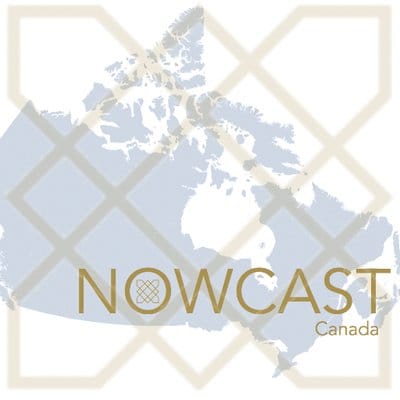
Canada JØLTS: September 2017
Following last Friday’s release of Statistics Canada’s October 2017 Labour Force Survey (LFS), the Institute of Fiscal Studies and Democracy (IFSD) has updated its Canada JØLTS analysis for September 2017.

Following last Friday’s release of Statistics Canada’s October 2017 Labour Force Survey (LFS), the Institute of Fiscal Studies and Democracy (IFSD) has updated its Canada JØLTS analysis for September 2017.

One of the more interesting unknowns in economics today is why economic activity has taken off, particularly in advance economies, but inflation in those countries has remained weak. This blogpost will examine why the strong-growth-weak-inflation dynamic has been observed in Canada, and why this phenomenon is about to come to an end. It concludes that wage growth has lagged advances in the Canadian economy and labour market, and that impending wage growth due to a tight labour market will drive higher core Consumer Price Index (CPI) inflation. But, as the Bank of Canada has telegraphed that it plans to take its time in raising interest rates, it could very quickly find itself behind the curve.

Tomorrow, Minister of Finance Bill Morneau will present the Fall Economic Statement (FES) of the Government of Canada. This document is largely considered an opportunity for the federal government to update Canadians on major policies being implemented and the state of the economy and public finances, as well as to announce new measures. And in the FES, a lot attention is generally directed towards the evolution of the fiscal situation, e.g. the budgetary balance and the fiscal outlook, since the release of the Budget earlier in the year.

Following last Friday’s release of Statistics Canada’s September 2017 Labour Force Survey (LFS), the Institute of Fiscal Studies and Democracy (IFSD) has updated its Canada JØLTS analysis for August 2017.
Chaque mois, Statistique Canada publie sa très populaire enquête sur la population active (EPA). Au menu figurent les très suivies données sur le taux de chômage et le changement dans le niveau d’emploi. Bien que ce sondage fournisse des statistiques détaillées sur la dynamique d’emploi au Canada et dans ses régions, aucune information n’est disponible à propos des mouvements d’entrées et de sorties du chômage au pays. Par ailleurs, bien que Statistique Canada publie aussi des statistiques mensuelles sur les nouvelles demandes d’assurance-emploi, celles-ci ne correspondent pas nécessairement à celles du chômage de l’EPA et sont publiées avec un mois de retard. Aux États-Unis, la demande d’information sur les mouvements d’entrées et de sorties du chômage est comblée par le Job Openings and Labor Turnover Survey (JOLTS) du Department of Labor. Ce dernier sonde directement les employeurs à propos des ouvertures de postes, des embauches, des congédiements, des départs volontaires et des autres types de séparation aux États-Unis. Le JOLTS permet une analyse plus nuancée du marché du travail en permettant d’identifier des pénuries ou des surplus de main d’œuvre. Il est une source de référence pour les marchés financiers et les décideurs publics.

Back in March, we published a blog post about @NowcastCanada, the Institute of Fiscal Studies and Democracy’s (IFSD’s) nowcast of real GDP growth, as well as the IFSD’s nowcast of the unemployment rate. Our full report on forecasting the unemployment rate using a Google index is now available on our website. See the updated blog post below for more information.

The potential scope and impact of CBAs in future public infrastructure spending remains an open question but will depend importantly on the building of capacity at the community level. A report prepared by Armine Yalnizyan, the well-known economist consulting for the Institute of Fiscal Studies and Democracy (IFSD), draws from experiences in Canada, the U.S., and elsewhere to explore opportunities, best practices, and potential governance supports to help maximize the returns on public infrastructure investments.

It’s been an amazing run for the Canadian economy over the past six-odd months. Real GDP growth this year is expected to well outpace our neighbour to the south by a wide margin. The labour market is rapidly tightening as well. And given Canada turns 150 years old this year, the bumper economy north of the 49th parallel is the icing on the cake of this sesquicentennial year. However, the party can’t last forever.

Canada turns 150 years old in a few short weeks, and it looks like the party that’s been going on for a while isn’t going to stop any time soon. Indeed, in the three quarters starting in Q3 2016, real GDP in Canada has experienced average quarterly growth of 3.5% annualized – a solid performance by any measure (Chart 1). To put this in perspective, growth in the US has been a more modest 2.2% over the same period. Mind you, some of the Canadian strength reflects a rebound following the negative economic impact of last summer’s devastating wildfires in Alberta. But recent growth has been more broad-based than we’ve seen in a while. And with @NowcastCanada tracking 2.0% annualized growth in Q2 2017, this above-trend print is helping to put the Canadian economy on track to hit 2.6% real growth in 2017 – the strongest advance since recovering from the Great Recession. Meanwhile, the U.S. economy is on track to advance by 2.2% this year – not bad but nowhere near the pace of its syrup-sipping cousin to the north.

To most readers, the topic of pricing infrastructure assets no doubt precedes to onset of a good night’s sleep. Concepts such as internal rate of return, amortization, economic forecasts, and risk premiums are enough to make even the most interested observer begin to nod off. However, in the context of the planned introduction of the Canada Infrastructure Bank (CIB), it is worth putting these concepts to use, as even a simple application of these ideas is important to evaluating the merits of the CIB.